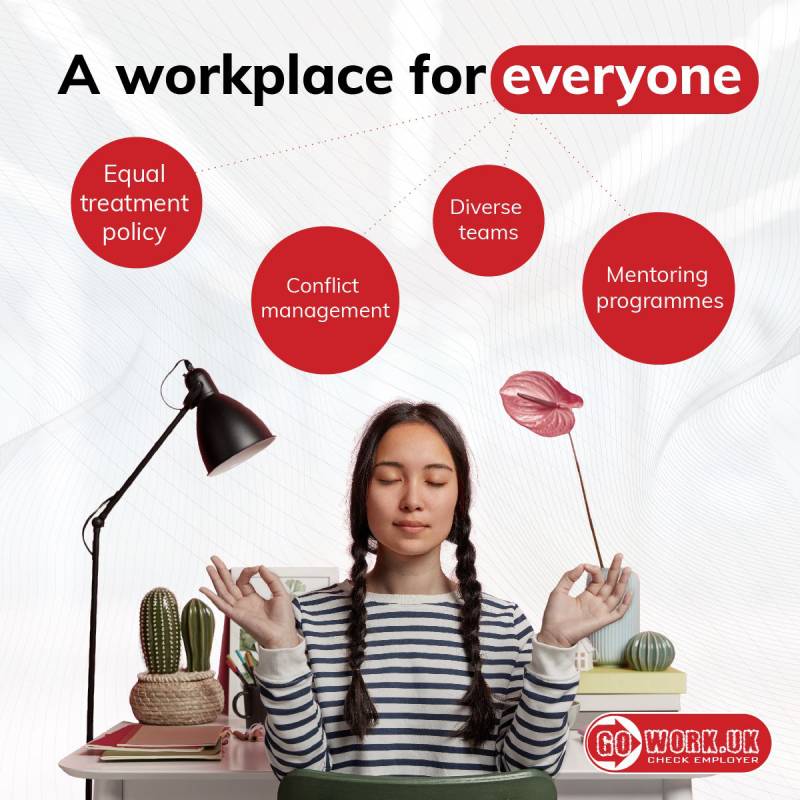The Art of Diversity Management: Creating an Inclusive Workplace for All

As businesses expand their operations across borders, they are naturally exposed to a myriad of cultures, backgrounds, and perspectives. This has led to workplaces becoming increasingly diverse, bringing together individuals from various walks of life. While this diversity is a treasure trove of different ideas and experiences, it also presents a unique set of challenges. Organizations are now recognizing the critical importance of managing this diversity in a way that not only respects individual differences but also harnesses this diversity for the collective good.
Table of Contents
The Business Case for Diversity
The advantages of a diverse workforce are not just theoretical; they are backed by concrete data. A recent study by McKinsey & Company has brought to light some compelling findings in this regard. Companies that boast gender-diverse executive teams are 21% more likely to outperform their counterparts in terms of profitability. The numbers become even more impressive when considering ethnic and cultural diversity, with such companies showing a 33% likelihood of financial outperformance. These statistics underscore the fact that diversity is not just a checkbox to be ticked off but a strategic lever that can propel businesses to new heights.
Challenges in Implementing Diversity Initiatives
Embracing diversity is not without its challenges. While the theoretical advantages are clear, the practical implementation of diversity initiatives often meets with various obstacles. Unconscious biases, deeply ingrained societal norms, and resistance to change are just some of the hurdles organizations face. Additionally, there’s the challenge of ensuring that diversity initiatives don’t come across as mere tokenism. Employees can easily discern between genuine efforts to promote inclusivity and superficial measures that are implemented just for optics. Overcoming these challenges requires a concerted effort, a clear strategy, and an unwavering commitment from all levels of the organization.
Strategies for Effective Diversity Management
- Leadership Commitment: The journey towards a diverse and inclusive workplace must begin at the top. Leaders play an indispensable role in setting the tone for the entire organization. Their commitment, both in words and actions, can inspire the rest of the workforce to embrace diversity wholeheartedly.
- Tailored Training Programs: One-size-fits-all diversity training modules often miss the mark. Instead, organizations should invest in tailored training programs that address their unique challenges, industry specifics, and cultural nuances.
- Mentorship and Sponsorship: These are powerful tools that can help underrepresented groups find their footing in the corporate world. By pairing them with seasoned professionals, they can gain invaluable insights, navigate workplace challenges more effectively, and chart a clear path to career advancement.
- Inclusive Recruitment Practices: To truly embrace diversity, organizations need to rethink their recruitment strategies. This involves reaching out to a broader talent pool, adopting unbiased screening processes, and ensuring that the recruitment panel itself is diverse.
The Role of Technology in Promoting Diversity
Tech tools and platforms are emerging as valuable allies in the quest for workplace diversity. Artificial Intelligence-driven recruitment tools, for instance, can help reduce human biases by screening candidates based on merit alone. Collaboration platforms, on the other hand, can bring together geographically dispersed teams, fostering a culture of inclusivity and mutual respect. As technology continues to evolve, it’s poised to play an even more significant role in shaping diverse and inclusive workplaces of the future.

The Role of Employee Resource Groups (ERGs)
Employee Resource Groups (ERGs), also known as affinity groups or business network groups, have emerged as powerful tools for fostering diversity and inclusion in the workplace. These groups are voluntary, employee-led teams that focus on shared characteristics or life experiences. ERGs can provide support, enhance career development, and contribute to personal development in the work environment. They also play a pivotal role in building internal networks, fostering a sense of belonging, and serving as a bridge between employees and leadership. By promoting understanding and collaboration among diverse groups, ERGs can drive innovation, enhance employee engagement, and contribute to an organization’s overall business strategy and objectives.
Conclusion
The quest for diversity and inclusivity is a continuous journey, not a destination. As the business landscape evolves, the definition and scope of diversity will also expand. Organizations that remain committed to the cause, continuously adapt their strategies, and genuinely embrace the spirit of inclusivity will not only foster a harmonious workplace but also gain a competitive edge in the global market. The path forward is clear: prioritize diversity, champion inclusivity, and reap the myriad benefits that come with it.
Is your company a role model, when talking about diversity management? Let us know at Gowork.uk!




